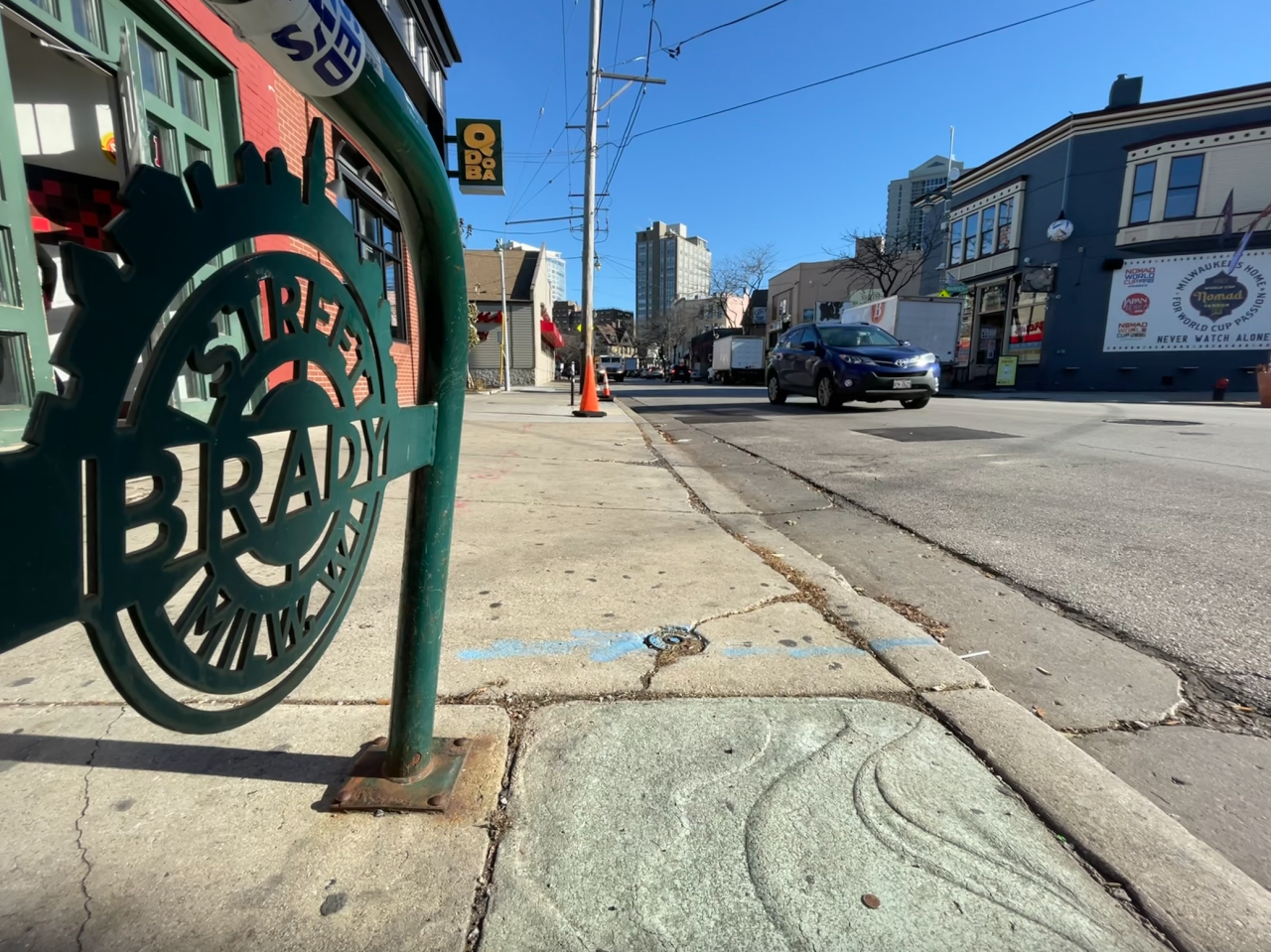MILWAUKEE — A study is underway to look at the impact of making a two-block stretch of Brady Street, between Warren Ave. and Franklin Place, pedestrian-only. Students at the University of Wisconsin - Milwaukee (UWM) are playing an important role in the conversation.
Brady Street was on the first map ever made of Milwaukee, the director of the Brady Street Business Improvement District says that history alone means any change, and the potential impact, needs to be thoughtfully considered. The process involves talking to a number of people — including students at UWM's School of Architecture and Urban Planning.

Jesse Doiron and Kyle Nelson are each pursuing a master's degree in urban planning — they chose to study the successes and pain points along Church Street, a pedestrianized area in Burlington, Vermont.
"Vermont and Wisconsin have very similar winters — unfortunately," chuckled Doiron. "So you want to make sure that people are still going to use the space 12 months of the year."
Their peers examined pedestrian-friendly streets in six other locations:
- Boulder, CO
- Denver, CO
- Chicago, IL
- Montreal, Canada
- State Street in Madison, WI
- Kalamazoo, Michigan
The goal was to research areas that are similar to Brady Street in density and climate.
Professor Bob Schnieder, Chair of the Department of Urban Planning, says common threads emerged as students set out to discover what was working well in these various cities and where the challenges lie.

"If you try to pedestrianize a place that doesn't have lots of people out on the street, it's probably not going to work very well," he summarized. "But luckily, Brady Street has lots of people out often."
Professor Schnieder said research showed the success of a pedestrian zone was also linked to its size. Students found cities that chose to restrict a pedestrian zone to just a few key blocks, tended to create a successful, high-energy area.
"It was exciting to learn their vacancy rates are essentially nonexistent — and how they monetize what were once parking spaces. Businesses are now able to use those for profit," explained Doiron. "Whether it's setting up restaurant seating, or putting clothing racks or retail racks out, they're able to expand their store square footage for free."
Another lesson across the different case studies was that change takes time.

"(Some) conversations had started five years before the first actual street change," added Professor Schnieder. "There was discussion and it ultimately took a long time for those communities to decide okay, yes — we're going to do this."
Doiron and Nelson can't predict Brady Street's future, but they're excited at the opportunity to provide data for this discussion.
"Maybe just on weekends it closes," mused Nelson, "Or maybe it's closed to through traffic but buses may still use it and delivery vehicles."
"I don't think that Brady Street can look exactly like Church Street has ended up, but there is definitely an opportunity to create a safer environment," added Doiron.
East Brady Street, where Arne Bast was hit and killed in 2022, has been labeled one of Milwaukee's most dangerous streets for pedestrians.
The timeline for an end to the study is fluid.
Brady Street has tested a temporary, pedestrian-only model in the past. That will happen again this summer when the Brady Street Festival returns on July 29, 2023.
It’s about time to watch on your time. Stream local news and weather 24/7 by searching for “TMJ4” on your device.
Available for download on Roku, Apple TV, Amazon Fire TV, and more.






